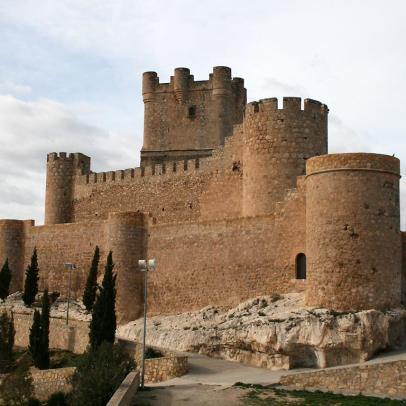In November 1088, Alfonso VI summoned El Cid in the outskirts of Villena (Belliana, as it is written in Estoria Roderici) so as to join the royal troops and lay siege against the Almoravids. The Almoravid forces had laid siege to the castle of Aledo, which at that time was held by the Castillians. El Cid, who at that time was in Ontinyent, did not show up at the rendevous fixed by the king. It could well be the case that the two armies never met. At any rate, Alfonso VI declared him subject to the ira regia, compelling him to go into exile for the second time. El Cid’s disgrace was even greater this time, for he had to fight in a foreign land.
There is no historical evidence proving that El Cid went through Villena in this occasion, though he is known to have been in Villena at a later time. Early in the summer of 1093, El Cid rose to a position of power in Valencia (though he had still not conquered the city); his power over the protectorate he had established was threatened because of the presence of the Almoravids, a berber tribe from Magreb who conquered Al-Andalus in the 12th century. The Almoravids had taken political suzerainty over the Iberian Peninsula, with some Muslims troops established at different points. El Cid held both the entrance to and exit from Valencia against any invasion from the south for which he rebuilt the castle of Carbonera, which is 70kms away from Villena, guarding it from any surprise attack.
In such a complex political situation, some of the Muslim troops aided El Cid in his fight against the invading Almoravids. Other Muslim troops were, on the contrary, openly hostile against El Cid. It seems that this was the case as regards the Muslim troops at Villena. As a matter of fact, the Mozarbs launched an attack against Villena and its territories in the summer of 1093, storming in Peña Cadiella.
As regards the castle, it is known that it is older than the castle of Salvatierra, which is situated close to it. Yet, the exact date in which it was built is unknown. There are Arab sources that mention the castle in the year 1172, though its current condition indicates that it is a 15th-century construction. It still displays some interesting Almohad elements.
The castle has an interesting courtyard inside the double walls, which are crenellated, and it has cylindrical turrets. The so-called Homenaje tower, which is 25 metres high, was constructed in the Almohad period and its higher part was completed by the Christians.
The most outstanding element of the castle’s interior are the Almohad vaults, which have been repaired, and the Muslim and Christian paintings in the walls, which were made by war prisoners. The castle was also used as a private manor and it was here where Don Juan Manuel (1281-1348), the author of "Conde Lucanor", prepared many of his books.
Visits: Entry tickets. Check information about opening hours and prices.
Rev. PAB 26.12.18






